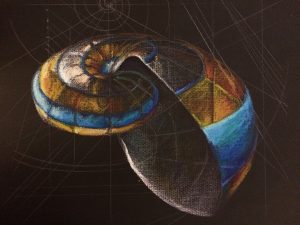Fibonacci sekvens
Fibonacci-sekvensen er et numerisk mønster – en række tal, hvor et tal findes ved at tilføje de to tal før det. Sekvensen vises i mange indstillinger i matematik og i andre videnskaber.
Matematikere har lært at bruge Fibonaccis sekvens til at beskrive visse former, der forekommer i naturen. Disse former kaldes logaritmiske spiraler, og Nautilus skaller er et eksempel. Du ser også logaritmiske spiralformer i spiralgalakser, og i mange planter som solsikke. Nogle planter grene på en sådan måde, at de altid har et Fibonacci-antal vækstpunkter. Blomster har ofte et Fibonacci antal kronblade, daisy kan have 34, 55 eller endda så mange som 89 kronblade.
Det blev beskrevet af Leonardo Pisano, italiensk matematiker bedre kendt som Fibonacci, som også populariserede hinduistisk -Arabisk numerisk system i Western System.



 This project (EDU-ARCTIC) has received funding from the European Union’s Horizon 2020 research and innovation programme under grant agreement No 710240. The content of the website is the sole responsibility of the Consortium and it does not represent the opinion of the European Commission, and the Commission is not responsible for any use that might be made of information contained.
This project (EDU-ARCTIC) has received funding from the European Union’s Horizon 2020 research and innovation programme under grant agreement No 710240. The content of the website is the sole responsibility of the Consortium and it does not represent the opinion of the European Commission, and the Commission is not responsible for any use that might be made of information contained.